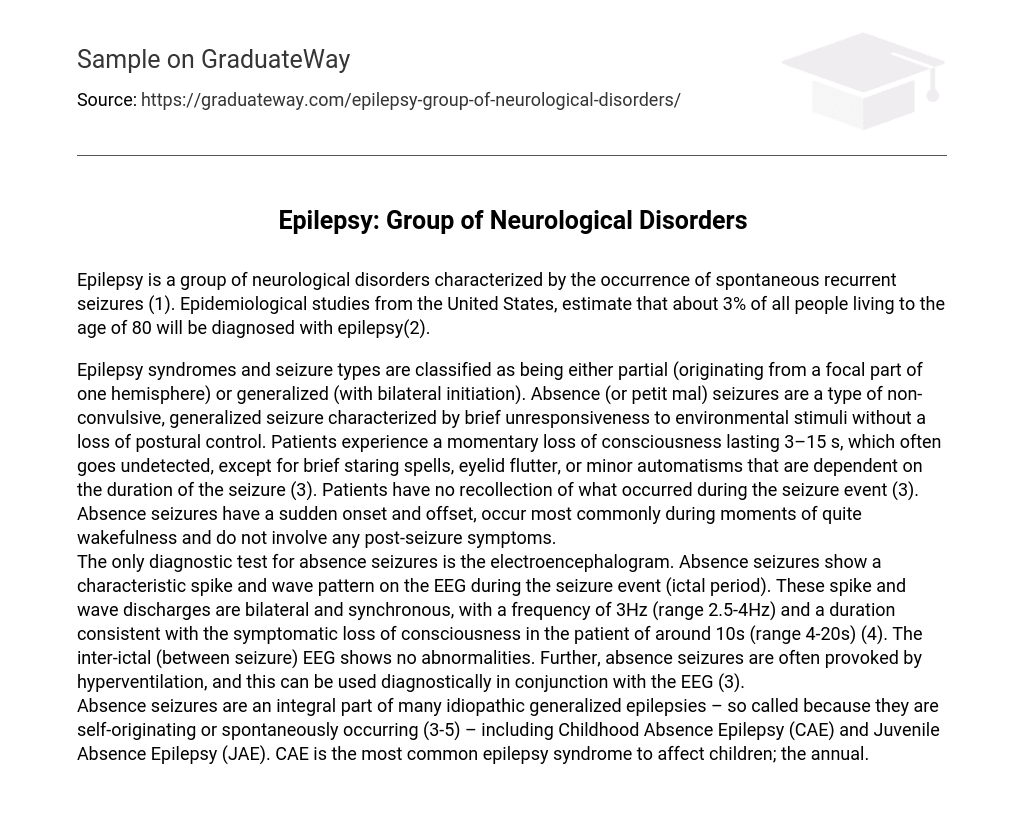Epilepsy is a group of neurological disorders characterized by the occurrence of spontaneous recurrent seizures (1). Epidemiological studies from the United States, estimate that about 3% of all people living to the age of 80 will be diagnosed with epilepsy(2).
Epilepsy syndromes and seizure types are classified as being either partial (originating from a focal part of one hemisphere) or generalized (with bilateral initiation). Absence (or petit mal) seizures are a type of non-convulsive, generalized seizure characterized by brief unresponsiveness to environmental stimuli without a loss of postural control. Patients experience a momentary loss of consciousness lasting 3–15 s, which often goes undetected, except for brief staring spells, eyelid flutter, or minor automatisms that are dependent on the duration of the seizure (3). Patients have no recollection of what occurred during the seizure event (3). Absence seizures have a sudden onset and offset, occur most commonly during moments of quite wakefulness and do not involve any post-seizure symptoms.
The only diagnostic test for absence seizures is the electroencephalogram. Absence seizures show a characteristic spike and wave pattern on the EEG during the seizure event (ictal period). These spike and wave discharges are bilateral and synchronous, with a frequency of 3Hz (range 2.5-4Hz) and a duration consistent with the symptomatic loss of consciousness in the patient of around 10s (range 4-20s) (4). The inter-ictal (between seizure) EEG shows no abnormalities. Further, absence seizures are often provoked by hyperventilation, and this can be used diagnostically in conjunction with the EEG (3).
Absence seizures are an integral part of many idiopathic generalized epilepsies – so called because they are self-originating or spontaneously occurring (3-5) – including Childhood Absence Epilepsy (CAE) and Juvenile Absence Epilepsy (JAE). CAE is the most common epilepsy syndrome to affect children; the annual.





